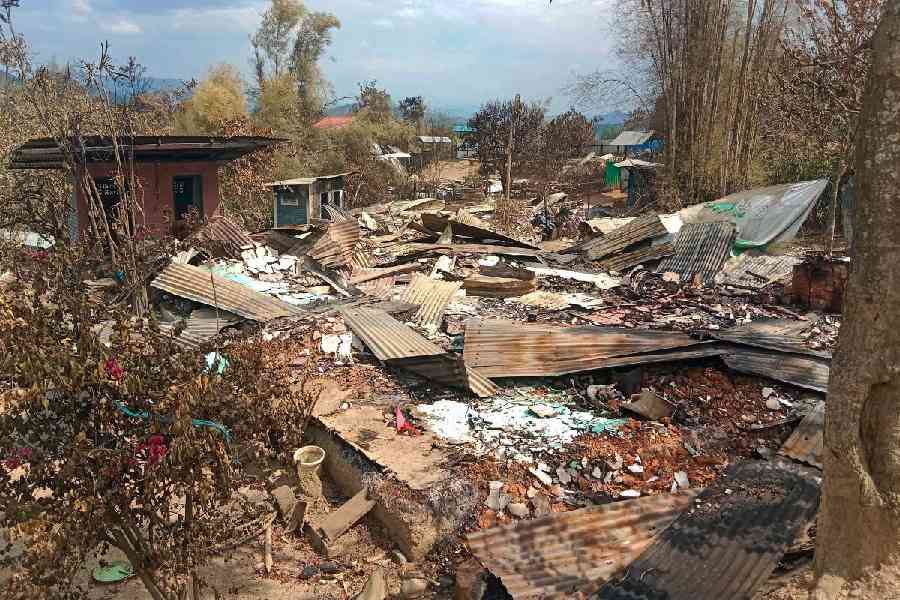Prime Minister Narendra Modi’s “silence” on the five-week-old Manipur violence is “deeply troublesome” and “really hurts”, JNU academic A. Bimol Akoijam has told journalist Karan Thapar in an hour-long interview for the news portal The Wire, uploaded on Friday.
“It hurts. The Prime Minister went to Odisha on June 3 to check on the (June 2) train (accident) victims. (On) May 3 — incidentally, one month before — it (the Manipur violence) started,” Akoijam, associate professor at JNU’s Centre for the Study of Social Systems, School of Social Sciences, said.
“Not a single word. It hurts. I have been in Delhi for almost 40 years. I have seen what is India, what is the notion of exclusiveness, the ‘otherness’ of India’s Northeast.”
The violence that broke out on May 3 between the majority Meiteis and the tribal Kukis, who are now demanding a separate administration, has left more than 100 people dead and 45,000 displaced despite the heavy presence of central forces.
“Had this happened in Bihar and somewhere (else), the media, the parliamentarians, the rest of country will not (merely) watch,” Akoijam, who hails from Imphal and is currently based in Delhi, said.
“His (Modi’s) silence is deeply troublesome… it really hurts. I am not angry.... He is also the epitome of the larger fault-line between the Northeast and the rest of India. That is what I think.”
He explained the fault-line bit, saying that after 75 years of Independence “we are (still) talking about (the) inclusion of (the) Northeast in history books”.
“Now, when this happened in Manipur, how many of you are having sleepless nights here (Delhi)? People like me get affected though I am here,” he said.
“I am sure (that) many of these children and students are very agitated because their father and mother… relatives have been killed. I can see that anger intribal students. I can see (that) among the Meiteis as well.... If you were worried you would have been crying....”
Akoijam was “positive” about a resolution and said that one way would be to create a second chamber in the Assembly with representation from the hills.
Most Meiteis, who make up 53 per cent of Manipur’s population, live in the six valley districts while the 10 hill districts — which make up 90 per cent of the state’s area — are dominated by tribals such as the Nagas and the Kukis.
“I am very positive. Politics is a dynamic process. We can imagine ways to handle (the crisis); (the) collective good can be achieved,” Akoijam said.
Akoijam added: “Instead of doing this autonomy and so on, why don’t you create a second chamber in the state Assembly with equal representation from all the districts, which is, incidentally, within the core hill areas? Create and handle development and forest affairs. You can have a second House... on the basis of areas, not on the basis of ethnic groups.”
Akoijam attributed the current crisis partly to the British policy on the hills and the valley that was based on a “false topographical perspective”, and which the Indian government carried forward.
According to Akoijam, the Imphal valley (790m from sea level) and the hill district of Churachandpur (922m) were treated as separate topographical entities just because of a difference of 132m in altitude.
He said this division between the valley and the hills led to people belonging to the same “ethno-linguistic” group thinking of themselves as different from each other.
Land laws introduced in 1960, which bar Meiteis from buying land in the hills, accentuated the difference between the hills and the valley.
“There is an urgent need for land reforms... for economic development,” Akoijam said. “This violence is driven by prejudices.”
Earlier, Pramot Singh, chief of the Meitei Leepun – an organisation accused of involvement in the violence – had told Thapar in an interview that most Kukis were outsiders.
Asked for his reaction, Akoijam said only an “investigation” could prove whether Pramot was right.
“I prefer to use ‘citizens’. In that sense, Kukis are citizens. Not all Kukis are foreigners. I am very clear on this one,” he said.
“But when you talk about the migration pattern, it is quite clear that some of these groups, which come under the category of Kukis, these are recent relatively compared to others.... By recent --- 100 or 200 years --- how can you call them outsiders, would be my argument.”
Akoijam criticised the media coverage of the violence.
“…If you (reporters) want to douse the flame(s), you will not try to be saviour of the tribal(s) and then succumb to a particular position; you will not be saviour of the Meiteis as Hindu, and then try to fuel the conflict.... You are not even careful about not naming people,” he said.
“This is a national problem. Manipur is part of this country. Instead of helping, you are fuelling this conflict through the reportage and others. You do a reportage analysis, content analysis of all the major newspapers. How many articles have been published by the Meiteis, how many have been published by Kuki scholars and so on, and what kind of perspective these reportage and paper editorials have taken? Please look into it, you will find how you are not helping.”












